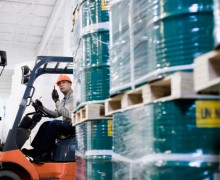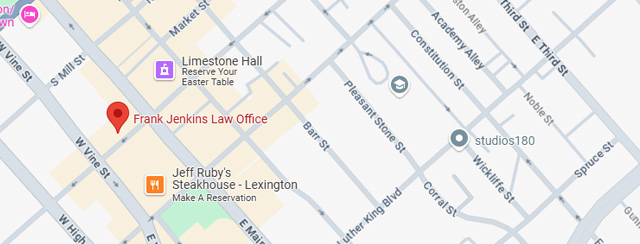
If you work in a factory or large warehouse, the odds are you come into contact with forklifts on a regular basis and understand the dangers they pose.
Though useful for retrieving and moving items from high storage places, forklifts also are dangerous. In fact, forklift accidents cause an estimated 85 fatalities and 34,900 serious injuries in the United States every year, according to toolboxtopics.com. Additionally, 61,800 forklift accidents cause non-serious injuries.
The Industrial Truck Association reports that 855,900 forklifts are used across the nation each year. About 90 percent of forklifts will be involved in a workplace accident at some point in their years of operation, which is typically about eight years, according to the association.
Overturning is the main cause of forklift fatalities, accounting for one-fourth of all deaths related to forklifts, according to the U.S. Department of Labor. Death also can result from being crushed between a vehicle and a surface or even between two vehicles.
Forklift accidents also can injure pedestrians and bystanders, usually when they are struck by forklifts or by loads that fall from forklifts. People are known to fall from forklift platforms as well.
More than 42 percent of these work-related accidents take place in the manufacturing sector, while nearly 29 percent occur in construction, and 12.5 percent are reported in wholesale trades.
Anyone who operates a forklift is required to go through certification training with classroom instruction and hands-on use, usually on-site and off-site. Operators also are supposed to be evaluated every three years and take refresher courses if they are seen operating a forklift unsafely, nearly involved in an accident, assigned to another type of forklift or go through a workplace change involving safe operation.
Operators should be aware of potential hazards on the job, including:
- The possibility of hitting pedestrians and objects.
Requirements and recommended practices include yielding the right of way to pedestrians, stopping and waiting for people to walk through a planned route and moving with caution through a congested area.
- Clutter and other obstacles.
The operator should first walk through an area to look for problems, usually use a spotter, warn pedestrians to stay away and sound the horn at blind corners, doorways and aisles and when backing up.
Pedestrians and bystanders should also be aware of dangers near forklifts:
- People should stand clear of forklifts in operation and realize they cannot stop quickly and require a wide swing radius.
- Those on foot should use specified walkways or stay to one side of an equipment aisle. Never ride on a forklift without authorization and not walk under an elevated load.
Plant managers should follow OSHA rules:
- Require permanent aisles and passageways to be free of obstructions and marked where forklifts are to be used.
- Set up pedestrian walkways, permanent railing and protective barriers, adequate walking space and pedestrian striping.
- Install convex mirrors at blind intersections, along with traffic control signs and speed limit signs.
Failure to follow OSHA guidelines and common-sense safety rules can increase the likelihood of forklift accidents involving operators and pedestrians.













